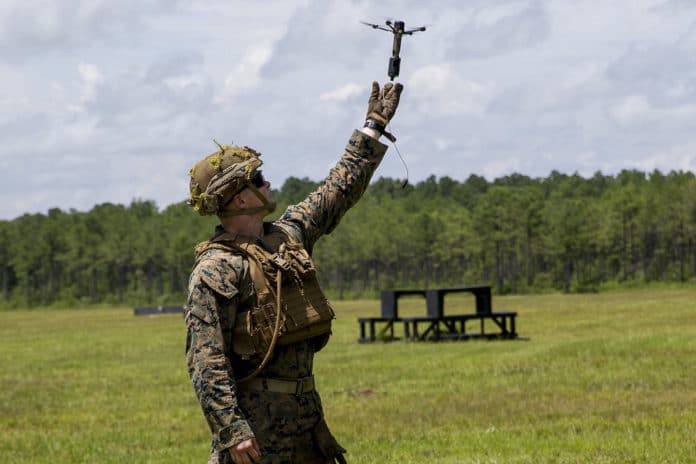Drones have long become an integral part of military equipment. Military drones are both very large structures capable of carrying a wide range of lethal weapons, and there are also much smaller devices, such as the Drone40, developed by an Australian defense company Defendtex.
Images shared online by the United States Marine Corps this week show, the US Marines are conducting a training exercise with the Drone40 at Camp Lejeune, North Carolina. The miniaturized, low-cost, expendable drone can be deployed by hand or launched from a 40 mm grenade launcher.
The device provides soldiers with a way to lob explosives to targets that would typically be out of reach or to leave the grenades hovering in the air like a sort of aerial landmine. This is the first time U.S. troops have been seen training with the versatile, potentially game-changing unmanned systems. The drones can carry a wide variety of payloads, including various sensors or small high-explosive warheads.
Its payload can be swapped easily in the field, and the drone could fly out on a separate mission with an intelligence, surveillance, and reconnaissance (ISR) payload capable of streaming full-motion videos. Apart from the ISR, the drone can carry a kinetic payload, function as a smoke or flash grenade, and even carry a laser designator.
According to the specifications, the Drone40 can stay in the air for 30-60 minutes, travel at speeds up to 45 mph (72 km/h), and travel up to 12 miles (19 km) away before detonating. Weighing at around 190 grams, the military drone has a maximum take-off weight of 300 grams. The Drone40 features a GPS-based autopilot system with a portable ground control station communicating over an encrypted radio data link. The drone can hit the target and detonate or simply return back to the base, whether it can be caught using a tether and reused for a future mission.
The drone can simply be launched by hand when required but can also be repurposed as a multiple round simultaneous impact (MRSI) munition when launched through a 40 mm grenade launcher. The drones’ manufacturer even claims that it uses mass manufactured printed circuit boards to make its low-cost and recoverable nano-unmanned aerial system.
